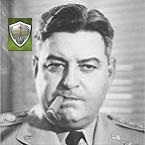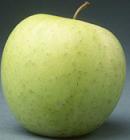damezzi
Posts: 299
Joined: 7/18/2007
Status: offline

|
quote:
ORIGINAL: Curtis Lemay
quote:
Terrain modifiers are arbitrary numbers, ...
?? In what way? The designer has full control of exactly what the terrain in each hex is. And players know exactly what terrain is in each hex.
That doesn't mean they have control of the configuration of this specific terrain. A urban hex, for example, may contain single store buildings or two/three store buildings, may have broad streets or very narrow ones. All those characteristics would change completely the advantage or disadvantage of specific types of weapons, but Toaw uses an average, which means: what would be the average advantage of defenders on the average type of urban terrain if we consider random placement of equipment along this terrain, since we can't determine the exact position of equipment with relation to the terrain irregularities. The definition of this value is arbitrary adding to the generation of a value (after summed with other variables) which represents the probability of suffering casualties in combat.
quote:
quote:
probability of hitting are arbitrary, and probability of spotting based on terrain are arbitrary too for sure and at the end, any of those events are random. Toaw is all based on arbitrary numbers (specified according to assumed averages) and random dice roll. Is there something more arbitrary and random than a quality check (which is based in strong arbitrary abstractions)?
But all of those things are random and arbitrary in real life, too. They're supposed to be modeled that way. Terrain isn't. Think of how this will play out: players will not know whether they are on one side or the other of a "ridge". That will be determined randomly - then vary from turn to turn, even.
The probability of hitting according to terrain follows exactly the same principle of the probability of spotting according to terrain. Both are based on enemy crossing your line of sight in favorable conditions, which must be always random in Toaw, since the game doesn't represent the exact topography of the region. The question is not if you're on one side or another of a ridge, also as the possibility of hitting doesn't pose the question if an anti-armor gun is or not placed on a determinate side of a cover element; as the increased chances a defender has on urban terrain (which will work sometimes in his favor and sometimes not) don't pose the question if the defender was inside the buildings or not, behind them or not; this is a misunderstanding of the problem.
Sure you can argue that defenders are supposed to have assumed the best defensive position and the modifier reflects that, but then I can say that reconnaissance team is supposed to have taken the best spot and probability would reflect that. Ridges, cover, obstacle to movement, etc are all distributed randomly along a terrain hex and things like probability to hit and combat modifiers represent average probabilities based on experience, narratives, subjective opinions, etc. At the end, the chance of the random event 'holding the hex' is improved by terrain type as would the chance of the event 'detecting enemy' be improved by terrain type. The randomness is in the event, not in the terrain attributes; those would be fixed numbers like the modifiers.
If I'm moving on a 10 km diameter hilly region (which the topography is random, since not precisely defined), for instance, I can have a value to represent the probability of being at a favorable spot at the exact moment my enemy is moving through this gap (which is randomly placed as are buildings, wadis, rocks, etc) in the terrain 6 kms away. To define this value would be as arbitrary as defining that you have a 50% chance of hitting armor in forest. Both events have a random chance of happening and must be based on average, playtested and corrected until reasonable.
ASL for instance (ok, it is on the tactical level, but I use it here only to show how terrain that can't be represented precisely can pose a random chance of an event to happen) represent some obstructive terrain in the line of sight as a dice roll modifier to represent the chance one have of targeting (seeing clearly) an enemy. This single tree which blocked my view on a specific fire action will perhaps not block it again on the next fire action. It doesn't pose the question if enemy is or isn't on the opposite side of the tree, to the right or to the left. Maybe all were well covered, maybe not, but in average one will have x% of hitting someone through this king of terrain... one will have x% chance of seeing someone through this kind of terrain.
Lock'n Load imposes a spotting roll based on terrain type before you can fire to see if you detect the enemy before attacking. And this is one of the most praised aspects of Lock'n Load. Even on the tactical level, where terrain is represented in a much more detailed way, they use random values to determine whether one is able to see a unit or not after tracing a line of sight. I'm just using tactical games to show how random values can be used to determine chance of detection even on games with more defined topography, not to compare the distances and nature of this detection.
quote:
quote:
You are confusing relief with altitude.
No, I'm not. If you read my last paragraph, you'll see that I suggest using your solution to simulate elevation, since then one would be able to look above any kind of terrain.
At the discretion of the designer.
So would mine solution. Designers would be able to establish a visibility diameter, that's the point. Terrain type would only serve as obstruction and if designers don't want them to obstruct, they can use the peak solution.
quote:
quote:
But you must admit that MOST of the time a mountainous region will block terrain; MOST of the time a hilly region will place some obstruction to the line of sight. Most of the time open terrain with some forest in the middle will have the line of sight blocked by it. Toaw is all based on average after all. Not always will it be easier for a primitive anti-tank gun to hit a tank in a forest than in the open, but most of the time... and that`s what Toaw model, not specific situations.
You may still have open terrain in different levels, for example, in which case forest or hill terrain, if in lower level, wouldn't block the view, but then, designers could use your idea to model it.
At 2.5km hex scale (and this is almost entirely what this will concern) how many cases of two open hexes separated by a single mountain hex can we expect? This will primarily come down to just plains of open hexes. And in those cases detection will be entirely random and arbitrary. The figures I have show that the distance to the horizon for a 6-foot man is 5.3km. So, on average, you shouldn't see very far, even over a billiard table.
I just see this as too much work for dubious benefit.
The example I placed was only to avoid the weird effect of seeing through mountains, but it serves any kind of terrain. Light woods, for example, would place some obstruction (after all we may find clearings and gaps in a light woods terrain), and having an open terrain followed by two light woods hexes isn't so rare, or? Don't stick to my examples to give the impression of a restrictive idea; they are just examples and as I stated this is just a sketch of an idea; no need to stick to any single detail I quoted to invalidate it; that only indicates bad will at trying to understand the bigger picture and the uncontrollable will to find flaw to stick with.
The figure you quote will be valid for a perfect billiard table, which, as you said, is rare. Most of the times you have a higher spot to send an observation team. I can see a hang glider 7 kms away from my window with naked eyes. It's true they are at a high level, but considering you have a higher spot to compensate (which most 2.5 km diameter area will have), seeing a moving column should be a lot easier. Not to mention observation tools, like the balloons used in WWI for artillery fire adjustment. Even if those would have to be represented inside the unit as reconnaissance asset, for them to have real effect, the chance to see further must exist.
I really don't see the point of going on with this discussion, as it is clear that out points of view are irreconcilable. As I said, I can't judge the amount of work involved, but I think such a solution would bring benefit for scenarios on the 2.5 and 5 km scale and those aren't rare. But after all, this is just a game, and such a discussion don't have a point if the idea wasn't well accepted by someone on the designers team.
Maybe a simpler idea would be to boost theatre reconnaissance with a modifier for enemy units within a radio of high reconnaissance friendly units, to represent detached reconnaissance teams going to favorable spots or even adjacent hexes to detect enemy at farther distances. This modifier could be set by the designer and would be used only when desirable. So one would be able to set a high modifier for favorable (in terms of visibility) overall terrain configuration and a low or null one for unfavorable configuration.
|
 Printable Version
Printable Version








 New Messages
New Messages No New Messages
No New Messages Hot Topic w/ New Messages
Hot Topic w/ New Messages Hot Topic w/o New Messages
Hot Topic w/o New Messages Locked w/ New Messages
Locked w/ New Messages Locked w/o New Messages
Locked w/o New Messages Post New Thread
Post New Thread